The World's Largest Language Group (or Linguistic Family) Is
Dr. C. George Boeree
Shippensburg University
The following maps and nomenclature are based on Merritt Ruhlen's book A Guide to the World'due south Languages (Stanford University Press, 1987), which in turn is strongly influenced by the piece of work of the great linguist Joseph Greenberg, who died May 7, 2001. Please understand that both the maps and statistics below are approximations. All errors are mine.
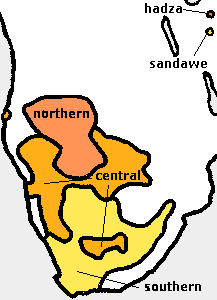
The Khoisan Family unit
Near 30 languages with near 100,000 speakers, the Khoisan family includes the people we phone call the Bushmen and the Hottentots.
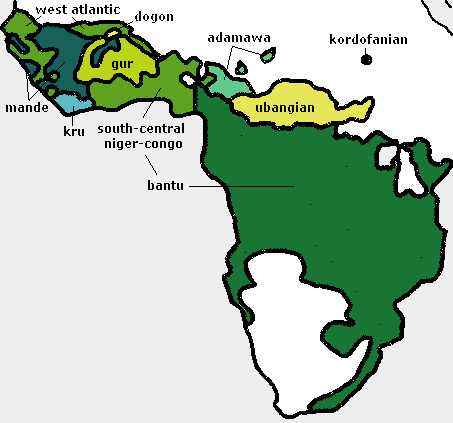
The Niger-Kordofanian Family
The largest sub-Saharan African family of languages, information technology includes some 1,000 languages with close to 200 million speakers. Best known are Mandinka, Swahili, Yoruba, and Zulu.
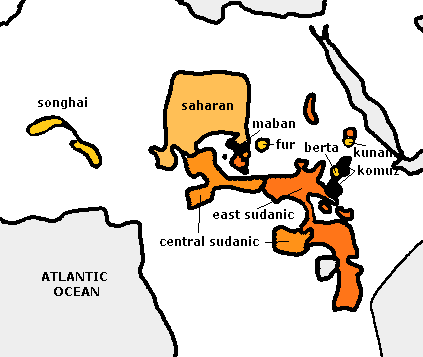
The Nilo-Saharan Family unit
With well-nigh 140 languages and 10 one thousand thousand speakers. The best known of these languages is Maasai, spoken past the tall warrior-herdsmen of due east Africa.
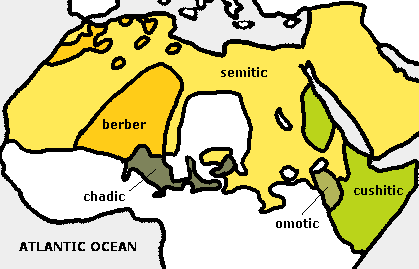
The Afro-Asiatic Family
This is a major language group, with 240 languages and 250 one thousand thousand speakers. It includes aboriginal Egyptian, Hebrew, and Aramaic, every bit well as the great Nigerian language Hausa. The many dialects of Arabic alone are spoken by as many as 200 million people.
The Indo-European Family
(with the isolates Basque, Burushaski, and Nahali)
The single largest language family, Indo-European has about 150 languages and near three billion speakers. Languages include Hindi and Urdu (400 million), Bengali (200 meg), Spanish (300 million), Portuguese (200 meg), French (100 million), German (100 meg), Russian (300 million), and English (400 million) in Europe and the Americas. With English language, ane tin can reach approximately one billion people in the globe.
There are three language isolates represented on this map, unrelated to any of the language families: Basque thrives betwixt France and Spain. Burushaski and Nahali are found in the Indian subcontinent.
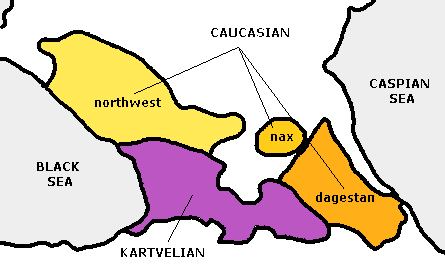
The Caucasian Family
At that place are 38 Caucasian languages between Russian and the Middle East, with well-nigh 5 million speakers. Abkhasian and Chechenian are the most familiar.
The Kartvelian languages are considered by many linguists to exist a separate family, possibly related to Indo-European. Its prime number example is Georgian.
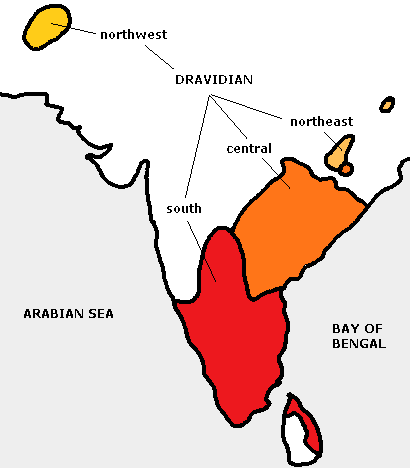
The Dravidian Family
These are the "old" languages of India, with about 25 representaties and 150 million speakers. All-time known are Tamil and Telugu.
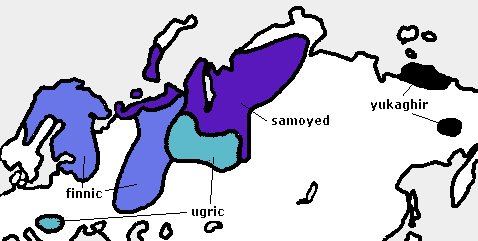
The Uralic-Yukaghir Family
There are about xx languages with 20 million speakers in this family unit. Best known are Finnish, Estonian, Hungarian, and Saami, the language of the Lapplanders.
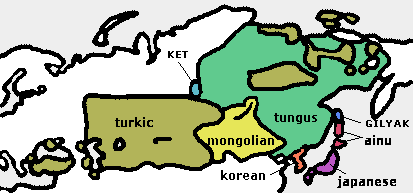
The Altaic Family
(with the isolates Ket and Gilyak)
There are about 60 langauges in the Altaic family unit, with about 250 million speakers. Included are Turkish and Mongolian.
There is considerable controversy about this family. First, it is oftentimes classified with the Uralic languages (run into above), which have a like grammatic structures.
2nd, many linguists doubt that Korean, Japanese (125 1000000 speakers), or Ainu should be included, or that these final three are even related to each other!
Also represented here are the language isolates Gilyak and Ket.
The Chukchi-Kamchatkan ("Paleosiberian") Family
Perhaps the smallest family, this one includes five languages with 23,000 speakers in the farthest northeastern reaches of Siberia. Many linguists consider these 2 unrelated families.
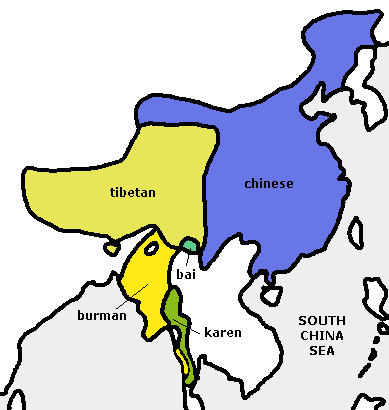
The Sino-Tibetan Family
A very of import language family, it includes some 250 languages. Mandarin Chinese (Putonghua) alone is spoken by one billion people!
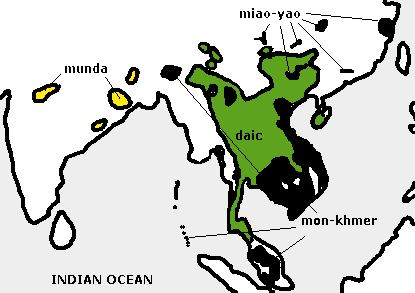
The Miao-Yao, Austro-Asiatic, and Daic Families
Austro-Asiatic (Munda in India and Monday-Central khmer in southeast Asia) has 150 languages and 60 one thousand thousand speakers, including Vietnamese.
Miao-Yao consists of iv langauges with vii 1000000 speakers, scattered all over southern Prc and southeast Asia by and large.
Daic has some 60 languages with 50 million speakers, especially Thai (Siamese).
These three language families are sometimes grouped with the Austronesian family (below) into a "superfamily" called Austric. On the other hand, some linguists consider Miao-Yao and Daic relatives of Chinese.
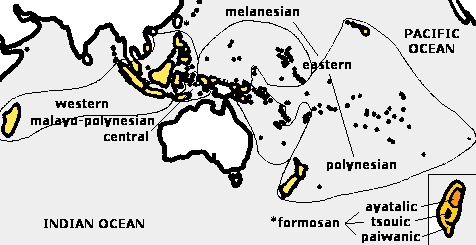
The Austronesian Family
This family includes some 1000 different languages, spoken by about 250 million speakers. Malay and Indonesian (essentially the same language) account for about 140 million. Other examples include Madagascar in Africa, Tagalog in the Philippines, the ancient languages of Formosa (Taiwan) -- now almost displaced by Chinese -- and the many languages of the Pacific Islands, from Hawaiian in the north Pacific to Maori in New Zealand.
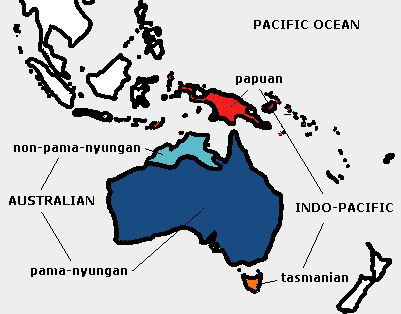
The Indo-Pacific and Australian Families
There are about 700 languages in the Indo-Pacific family unit, most of them in the island of New Guinea, with nearly three million speakers. Many linguists are not at all convinced that all these languages are related. In fact, a number of them have nevertheless to be studied! On the other paw, some believe that the family unit may include Tasmanian, now extinct.
Possibly related are the 170 languages of the Australian aborigines. Sadly, there are but almost xxx,000 native speakers left.
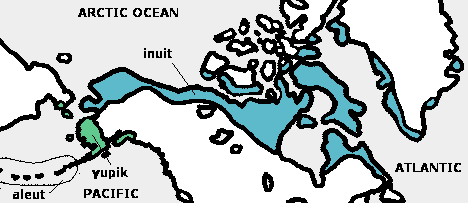
The Eskimo-Aleut Family unit
The Eskimo-Aleut family consists of nine languages, spoken past about 85,000 people. The Inuit today play an important role in the governing of Greenland (Kalaallit Nunaat) and the Canadian territory of Nunavut.
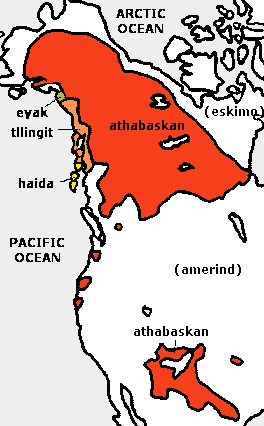
The Na-Dene Family
This family unit includes 34 languages spoken by virtually 200,000 people. Best known examples are Tlingit, Haida, Navaho, and Apache.
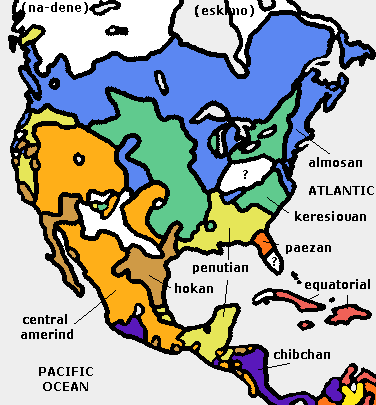
The Amerind Family (North America)
Although many linguists practise not take the idea that all North and Due south American Indian languages (other than the Na-Dene and Eskimo-Aleut) tin be classified into one family, information technology is oft accustomed for convenience sake. Amerind includes nearly 600 languages, with more than 20 million speakers. In North America, some of the best known names are Ojibwa and Cree, Dakota (or Sioux), Cherokee and Iroquois, Hopi and Nahuatl (or Aztec), and the Mayan languages.
The Amerind Family (Southward America)
The language map of South America includes some of the North American sub-families, and adds a few more. Well known languages include Quechua (Inca), Guarani, and Carib. The Andean language sub-family (which includes Quechua) numbers nearly nine million speakers!
Posted on July 15, 2000; revisions posted November. 25, 2003
kramersuliterty57.blogspot.com
Source: https://webspace.ship.edu/cgboer/languagefamilies.html
0 Response to "The World's Largest Language Group (or Linguistic Family) Is"
Post a Comment